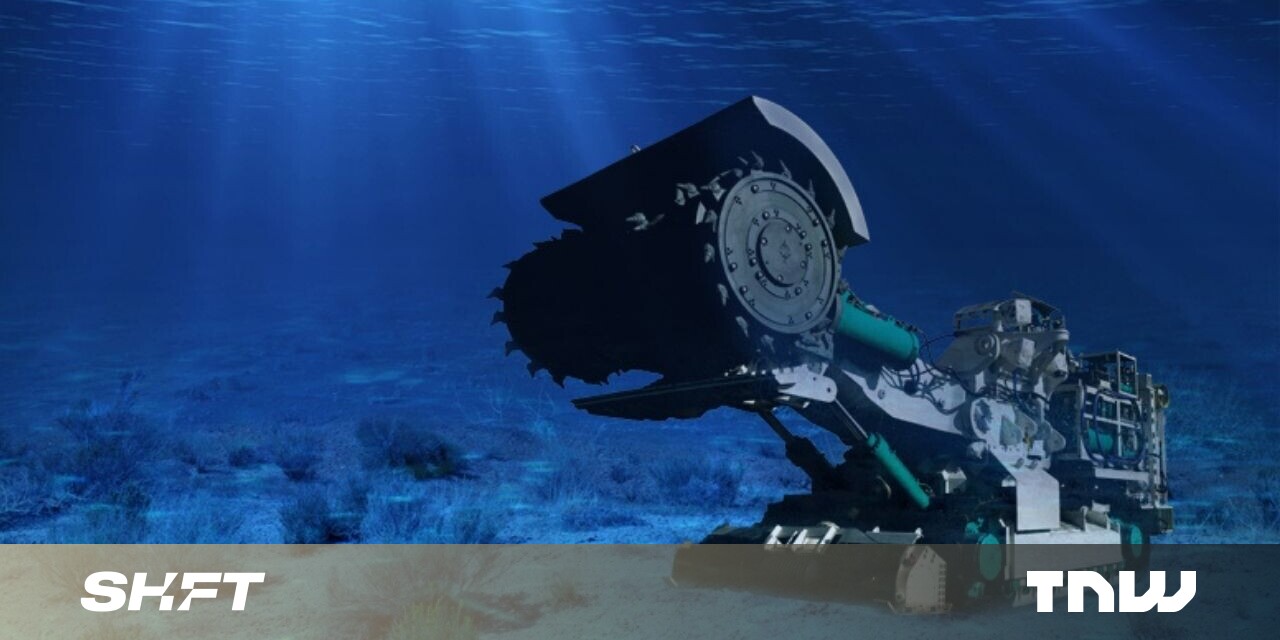#With deep-sea mining, the Pacific Islands are caught between money and the environment

Table of Contents
“#With deep-sea mining, the Pacific Islands are caught between money and the environment”
One economic alternative lies just offshore. The Clarion-Clipperton Zone (CCZ) is a deep-sea trench spanning 4.5 million square kilometres in the central Pacific Ocean between Hawaii and Mexico. On its seabed are potato-sized rocks called polymetallic nodules which contain nickel, copper, cobalt and manganese. These formed over centuries through the accumulation of iron and manganese around debris such as shells or sharks’ teeth.
There are estimated to be around 21 billion tonnes of manganese nodules in this trench alone, and demand for these metals is likely to skyrocket as the world ramps up the development of batteries for electric vehicles and renewable power grids.

While much of the CCZ lies beneath the high seas where no single state has control, it’s adjacent to the exclusive economic zones of several Pacific island states, including the Cook Islands, Kiribati, Nauru and Tonga. Lacking the means to search for the metals themselves, these states have sponsored mining companies to take out licences with the International Seabed Authority (ISA), which is responsible for sustainably managing the seabed in international waters. This would allow these companies to explore the seabed and determine how viable mining is likely to be, and its potential environmental impact.
To date, ISA has approved 19 exploration contracts, 17 of which are in the CCZ. A Canadian company, The Metals Company (formerly DeepGreen Metals) has contracts with Tonga, Nauru and Kiribati.
With so little known about the biodiversity of this largely unexplored part of the ocean, it’s difficult to accurately predict how deep-sea mining will affect species here. Environmental organisations and scientists have argued for a moratorium on mining until more extensive research can be done.
Some Pacific islanders, including The Alliance of Solwara Warriors, representing indigenous communities in the Bismark and Solomon Seas of Papua New Guinea, have protested the lack of information given to local communities about the potential impact of mining. In April 2021, Pacific civil society groups wrote to the British government seeking support for a moratorium. Meanwhile, a former president of Kiribati, Anote Tong, has described deep-sea mining as “inevitable” and urged businesses to figure out how to do it safely.
But time is running out. Seven exploratory licences are due to expire in 2021, making it imperative that either a moratorium is adopted internationally, or the ISA adopts a legal framework for determining the conditions under which extractive mining can take place.
From exploration to extraction
Work towards this framework has been ongoing since 2014. Despite this, the 168 nations of the ISA assembly have yet to agree a code for regulating extractive mining contracts. The ISA’s ambition to reach an agreement in 2020 was derailed by the pandemic, and it’s unclear whether meetings will go ahead in 2021. It’s likely that exploratory contracts will expire in the meantime, increasing pressure on the ISA from mining companies and those states sponsoring them to grant exploitation licences. Exploratory licences are regulated by the ISA. Without an agreed code, extractive ones are not.
Even if a consensus were reached, enforcing environmental safeguards would be difficult. Pinpointing responsibility for the source of any pollution or environmental damage is tricky when mining takes place in such deep water. There are also few, if any, physical boundaries between one mining area and another. The effects of mining on different ecosystems and habitats might take time to manifest.

International consensus on a moratorium is unlikely too. Mining companies have ploughed a lot of money into developing technology for operating at these depths. They will want to see a return on that, and so will their investors. States which have sponsored mining contracts – including some Pacific islands – will want to reap the royalties they have been promised.
Pacific island states find themselves on the horns of a dilemma. They are among the countries most vulnerable to climate change and so support strong action. But unless alternatives are found, the developed world’s green transition will probably accelerate demand for metals resting peacefully in the deepest parts of the ocean surrounding these islands. It will be the people here who will bear the costs of deep-sea mining undertaken without sufficient caution, not the drivers of electric cars in the global north.
This article by Sue Farran, Reader of Law, Newcastle University, is republished from The Conversation under a Creative Commons license. Read the original article.
If you liked the article, do not forget to share it with your friends. Follow us on Google News too, click on the star and choose us from your favorites.
For forums sites go to Forum.BuradaBiliyorum.Com
If you want to read more like this article, you can visit our Technology category.